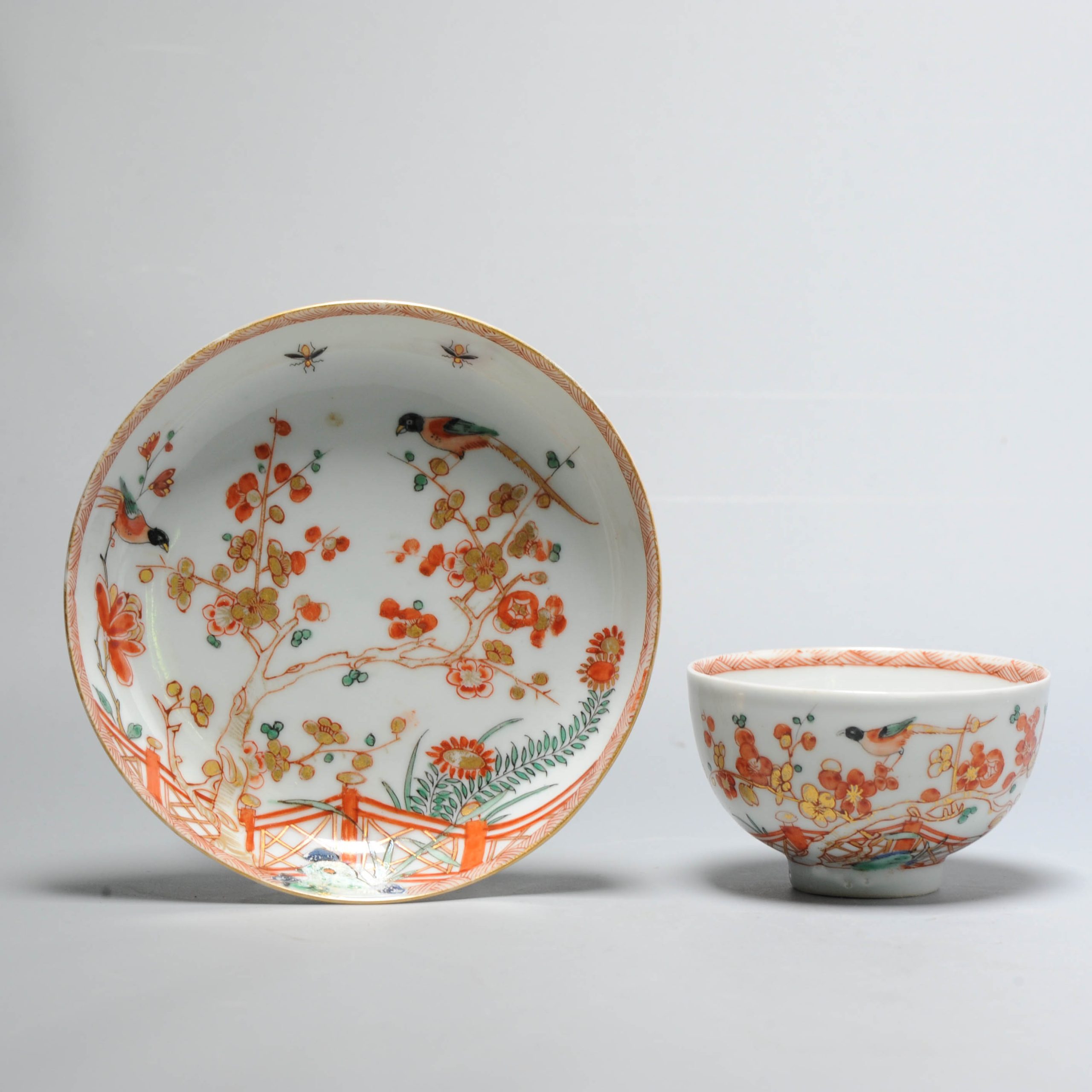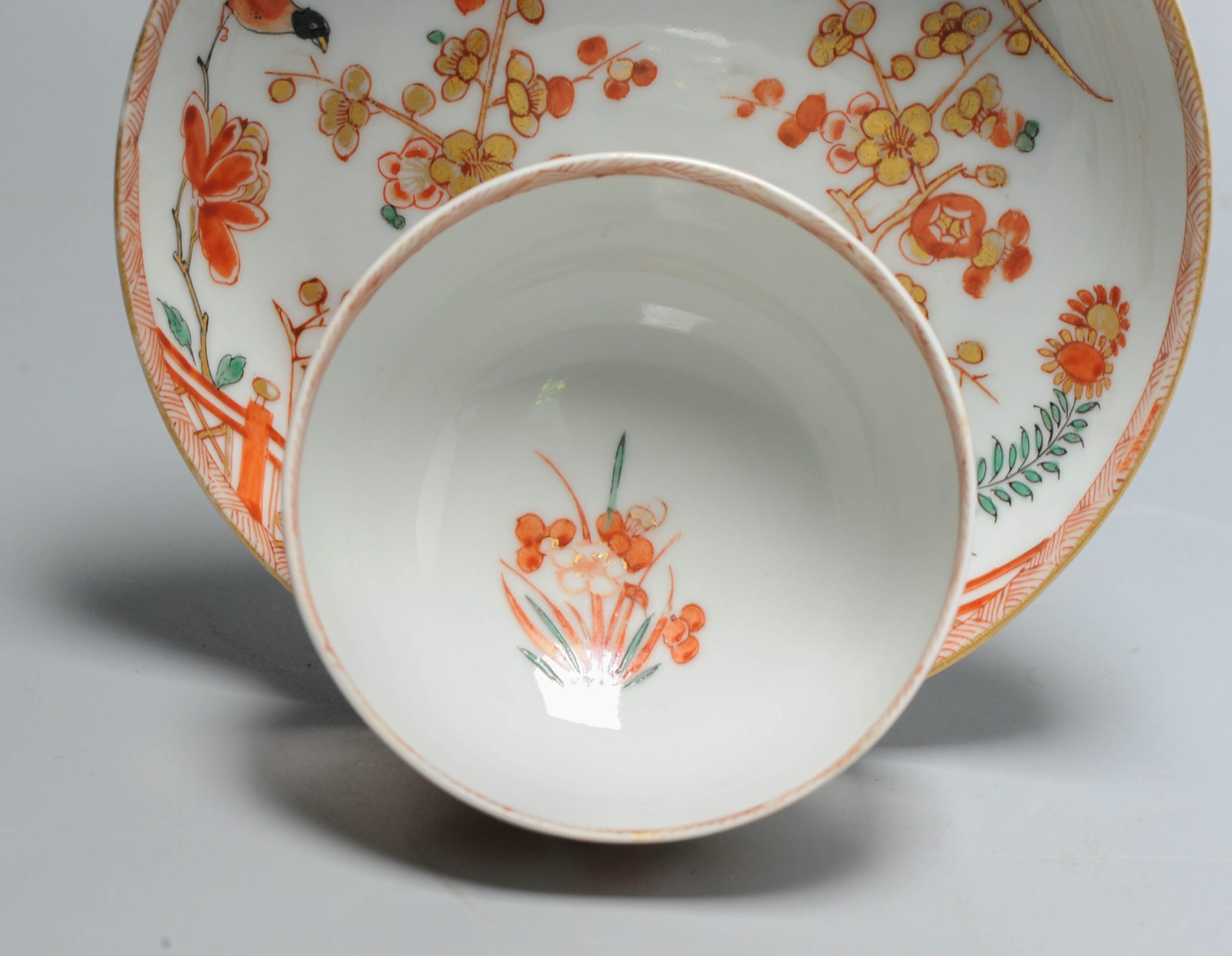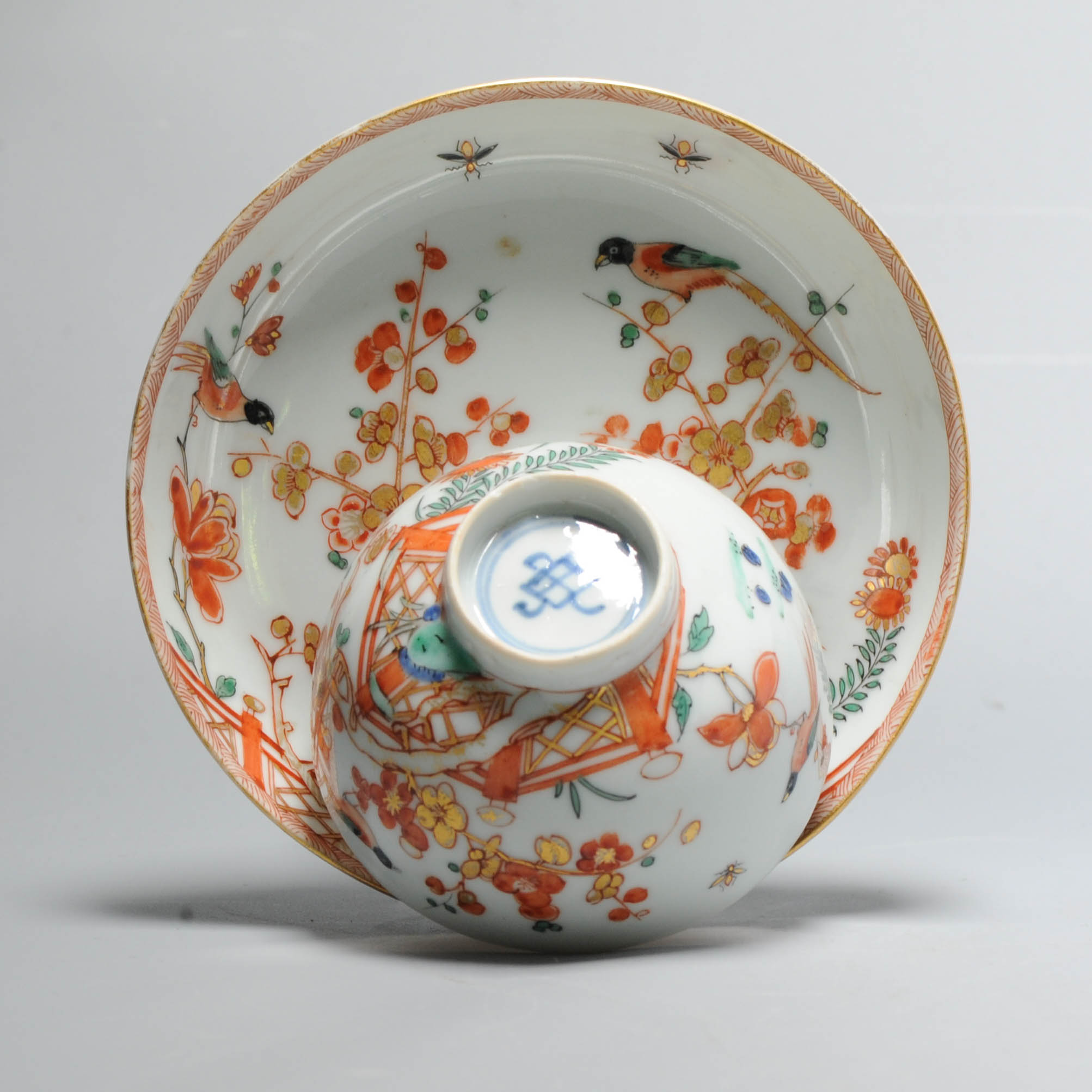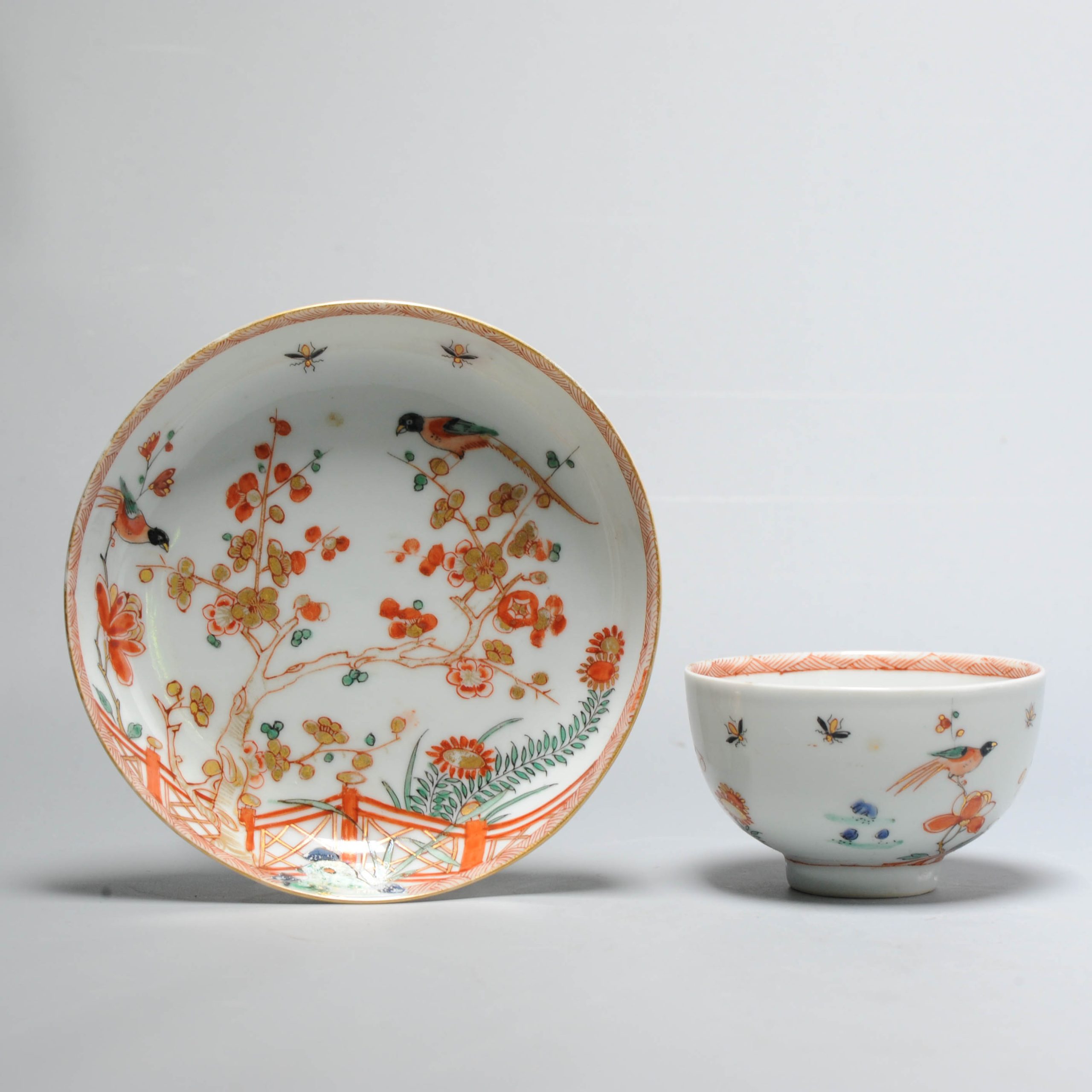Tea set Kakiemon Style Copper Red Birds Amsterdam Bont China Kangxi (1662-1722)
无货
Condition Report: Both cup and dish with a chip to base rim, cup also with small frit to base rim. The wall of the dish has some enamel remaining. Size 131x28mm and 80x48mm DiameterxHeight
A highly unusual and high quality set from the 18th century. Thinly potted porcelain from the Kangxi period with later ( (1730-1760) ) over-decorated garden scene in Kakiemon style of birds (parrots?) on floral branches. Insects flying over. Combination of Rouche de fer/Copper red/Blood & Milk and famille verte enamels. Truly a museum piece.
Both marked with a lozenge in two concentric circles.
These wares can be attributed to Amsterdam Bont porcelain.
Amsterdams Bont is the Dutch name given to a specific group of Chinese or Japanese porcelain that was over-decorated with enamels in the Netherlands. The group consists of bowls, plates, vases, cups and saucers, etc., that were painted in underglaze blue in Jingdezhen or Arita (Japan) and shipped to Holland. Because coloured wares yielded more profits than the ordinary blue-and-white, an additional enamelled decoration was painted on these porcelains. Sometimes this new decoration respects the original Chinese or Japanese decoration and elaborates on it. Other times, however, the Dutch painter was not so respectful and over-painted the blue, creating a chaotic design. Of course, it was easier to paint undecorated pieces that were completely white, for which Japanese wares seem to have been preferred. Over-decorating first appears c.1700 and continued far into the 18th century. It was probably done privately by individuals to generate some extra income. These over-painted pieces were fired in local ceramic factories, which did this in addition to their normal assortment. It is likely that this practice was concentrated in Delft, Makkum and Harlingen where earthenware (faience) was produced, but it could also be done in tile factories such as those in Rotterdam. Notwithstanding the name of this category, there is no indication that it was done on a large scale in Amsterdam. Dated pieces are rare, and because there is almost no documentary information on Amsterdams Bont, it is difficult to say when exactly these pieces were made. Usually, carefully painted objects are regarded as early.
Overall Condition; Both cup and dish with a chip to base rim, cup also with small frit to base rim. The wall of the dish has some enamel remaining. Size 131x28mm and 80x48mm DiameterxHeight
Period
18th century Qing (1661 – 1912)
We start an auction every week on thursday, ending the next sunday;
https://www.ebay.com/str/antiquefromshangrila?LH_Auction=1
We combine shipment and have over 2500 fixed listings in store,
always good to take a look if you see other items you like to save some shipping
and mother nature:
https://www.ebay.com/usr/theceramics_and_collectibles
All will be packed neat and sent track and trace and insurance. Registered airmail.
Packages are always shipped on the next wednesday.
If there is a specific hurry please contact us.
——————————————————————————————————————
Additional Information
| Region of Origin | |
|---|---|
| Primary Material | |
| Type | |
| China Dynasty Period | |
| Decoration Type / Colour | |
| Century | |
| Japanese Style | |
| Condition Report | |
| Material |

















